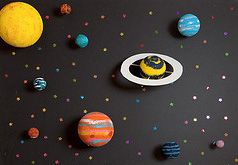 I never doubted that we’d find other planets with physical characteristics somewhat close to our own.
I never doubted that we’d find other planets with physical characteristics somewhat close to our own.
Gliese 581 d (named after Wilhelm Gliese) is only 20 light-years away from us and has liquid water, so I’m psyched about the next step: finding out whether or not there’s life there. But what kind of life might it be?
For you detail-oriented folks, here’s the preprint from arXiv. But for those of you who would like an introduction to astrobiology first, here are some good sources of background info:
- In the library catalog, put astrobiology OR exobiology into the Advanced Keyword page as SUBJECT keywords. Life in Space: Astrobiology for Everyone and Complete Course in Astrobiology are in the QH325 – QH327 section with other books on the topic.
- Encyclopedias are great resources for background info — one of my favorites, AccessScience, has a nice article called “Astrobiology.”
- NASA’s wonderful Astrobiology: Life in the Universe site has a diagram of the star Gliese 581 and its planets.
By the way, if this topic interests you, JHU’s Astrobiology Club would love to hear from you.
(Apologies to Constantine Cavafy for the title of this post.)
